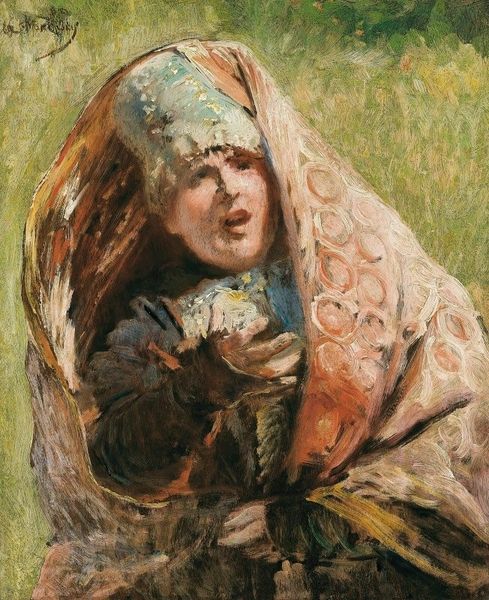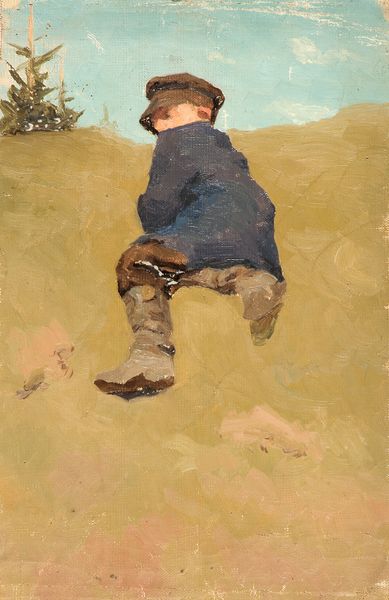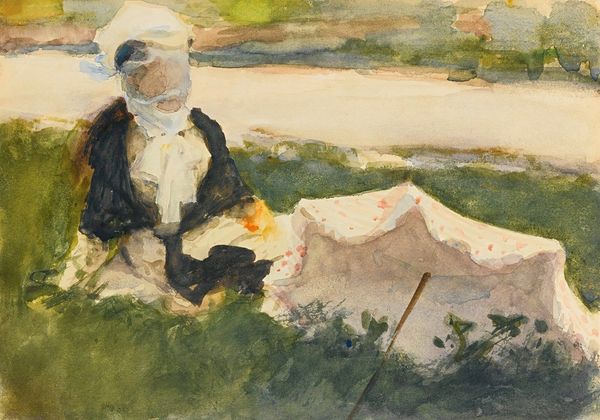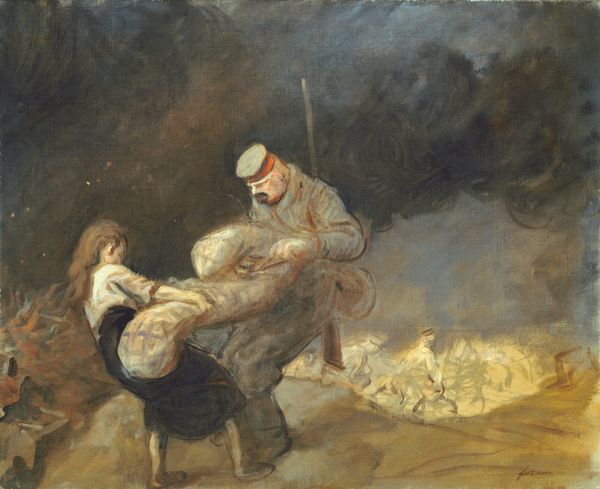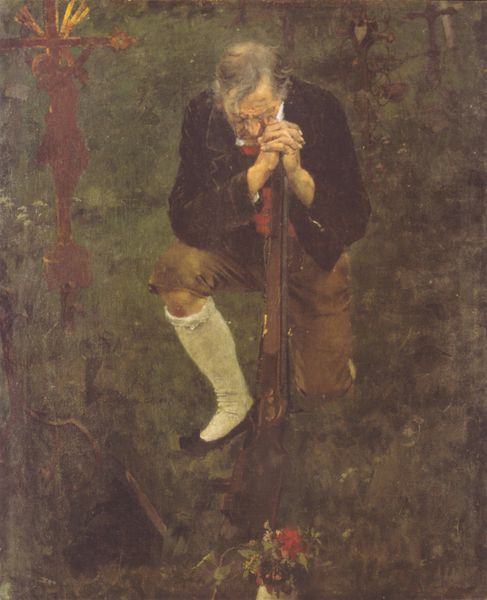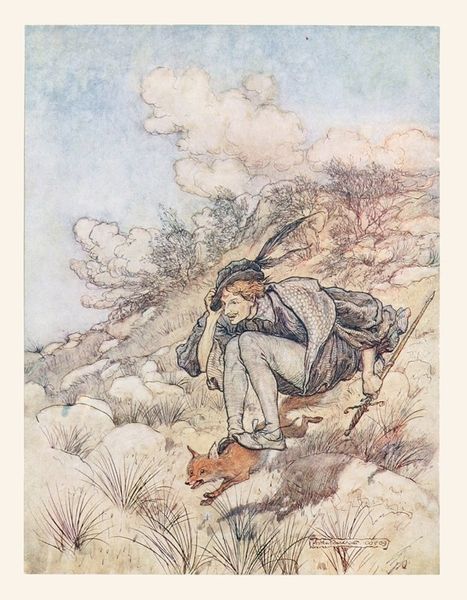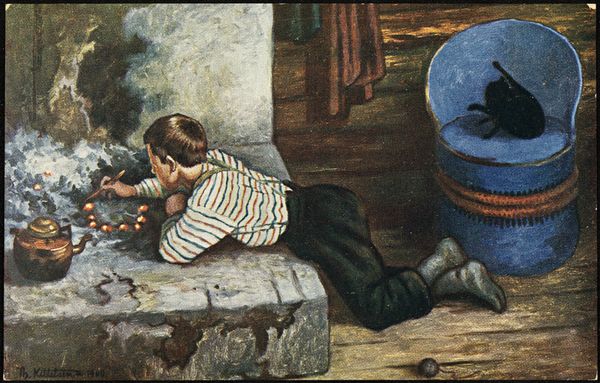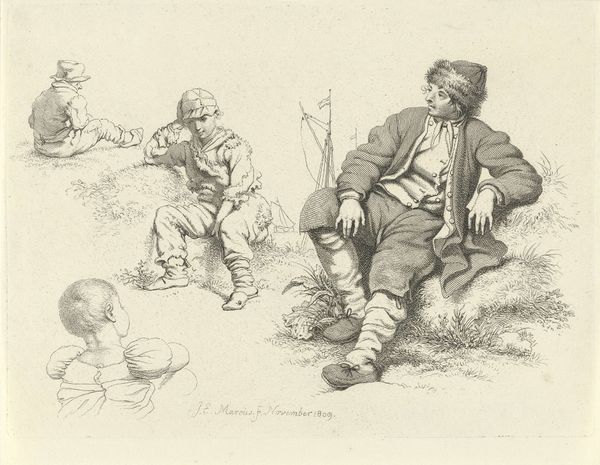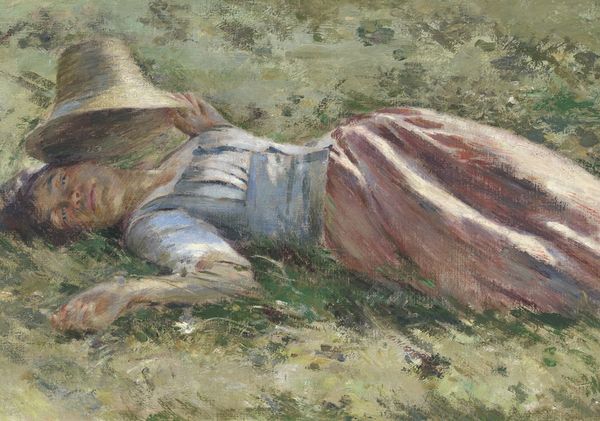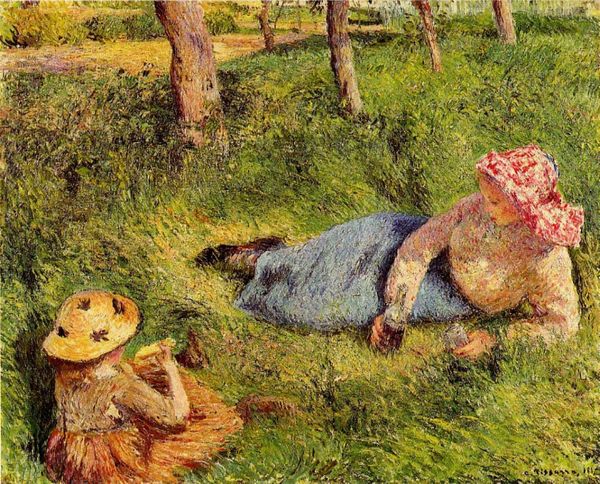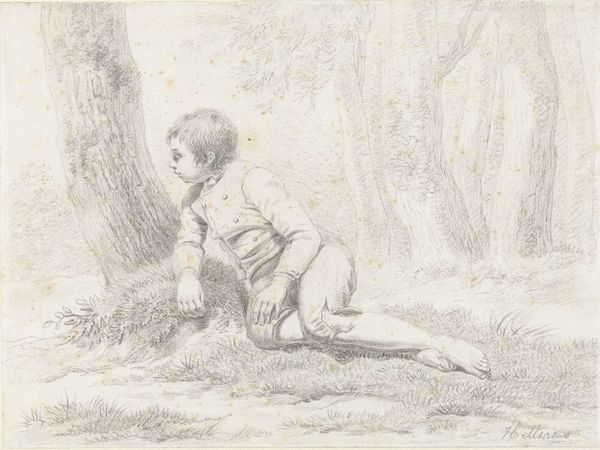
Copyright: Public domain
Georg Pauli painted Göran in the green grass, in 1897. It shows a boy reclining in a meadow, his red cap and relaxed pose creating a sense of carefree innocence. Pauli was a Swedish artist, and this painting reflects a broader cultural interest in depictions of childhood and rural life during the late 19th century. Industrialization was rapidly changing Swedish society, and there was a nostalgic yearning for simpler times. This painting can be seen in light of the rise of national romanticism which emphasized folk culture and traditions. The image invites us to consider the changing role of children in society. Were they perceived as innocent beings deserving of leisure, or as future workers who needed to be prepared for the demands of industrial labor? To fully understand the image we could examine Swedish literature and social commentary of the time. These kinds of cultural documents provide valuable insights into the social conditions that shaped this artwork.
Comments
No comments
Be the first to comment and join the conversation on the ultimate creative platform.

